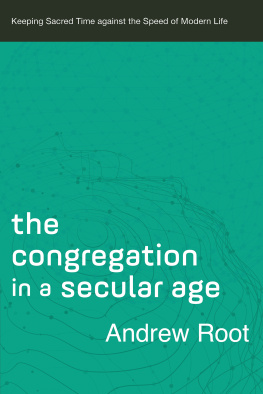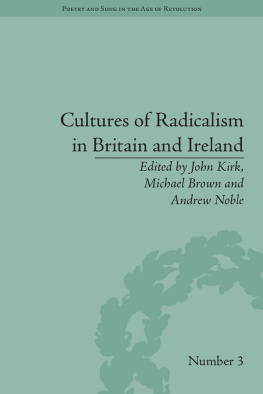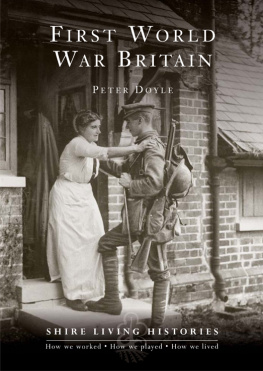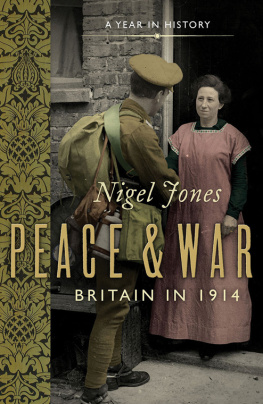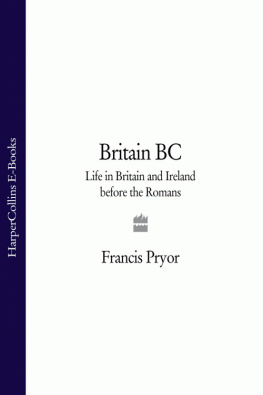Sacred and Secular Martyrdom in Britain and Ireland since 1914
Sacred and Secular Martyrdom in Britain and Ireland since 1914
John Wolffe
Contents
This book is a somewhat delayed outcome of a Research Councils UK Global Uncertainties Leadership Fellowship that I held between 2013 and 2015. The fellowship had a dual purpose, to support original research and to facilitate wider leadership activities that, in particular, brought academics into dialogue with non-academic stakeholders to advance impact and public engagement. A central focus of my leadership activities was to highlight the importance of academically informed religious literacy for shaping public policy, for ensuring accurate reporting of religious issues in the media, for counteracting prejudice and stereotyping, and for challenging distorted and problematic interpretations of religious traditions themselves.
This book aims further to serve that overall purpose through providing objective academic analysis of a particular problem that has long both fascinated and disturbed me. A crucial aspect of religious literacy is the ability to understand the complex and often contested interface between the sacred and the secular, which is brought into particularly sharp focus by the question of martyrdom. Present-day concerns around the martyrdom claims of suicide terrorists, needed, it seemed to me, to be set in a historical and comparative perspective. This is the task that, primarily within the compass of Britain and Ireland, this book seeks to fulfil.
Like every author, I have incurred many debts. Above all, I am grateful to the Arts and Humanities Research Council and the Economic and Social Research Council for jointly funding the fellowship that made the underlying research possible. Gavin Moorhead, research associate at The Open University, and Neil Jarman and John Bell, collaborators at the Institute for Conflict Research in Belfast, have been invaluable colleagues, especially in conducting the interviews that enabled the analysis of recent views in the second half of
always, I am indebted to my wife, Helen, and my son, David, for their love, support and tolerance of my particular academic preoccupations.
Earlier versions of some passages in
were previously published in The Mutations of Martyrdom in Britain and Ireland c.18501920, in James Kelly and Mary Ann Lyons, eds, Death and Dying in Ireland, Britain and Europe: Historical Perspectives (Dublin: Irish Academic Press, 2013), 34968, and some from
in Forever England beneath the Cross of Sacrifice: Christianity and National Identity in British First World War Cemeteries, in John Carter Wood, ed., Christianity and National Identity in Twentieth-Century Europe: Conflict, Community and the Social Order (Gttingen: Vandenhoeck and Ruprecht, 2016), 5372.
April 2019
| BL | British Library |
| BMH | Irish National Archives, Bureau of Military History |
| CTS | Catholic Truth Society |
| LPL | Lambeth Palace Library |
| NIPC | Northern Ireland Political Collection, Linen Hall Library |
| NLI | National Library of Ireland |
| NMA | National Memorial Arboretum |
| ODNB | Oxford Dictionary of National Biography |
| RMCU | Royal Martyr Church Union |
| TNA | The National Archives, Kew |
| WDA | Westminster Diocesan Archives |
| WGC | Imperial/Commonwealth War Graves Commission |
Exploring sacred and secular martyrdoms
In late 1914, responding to heavy British casualties in the opening battles of the First World War, the bishop of London, Arthur Winnington-Ingram, sought to console bereaved families:
You have lost your boys, but what are they? Martyrs martyrs as really as St Stephen was a martyr martyrs dying for their faith as really as St Stephen, the first martyr, died for his. They looked up when they died in the trenches, or in the little cottage where they were carried, they looked up and they saw JESUS standing on the right hand of GOD. And he is keeping them safe for you there when the time comes. Covered with imperishable glory they pass to deathless life.
Winnington-Ingrams equation of dead soldiers with Stephen, the archetype of Christian martyrdom, is an apt starting point for this book, which seeks to explore the uses and ambiguities of the concept during the century since 1914.
Stephens martyrdom is described in some detail in the New Testament book of Acts (6:87:60). His preaching in Jerusalem about Jesus of Nazareth is full of grace and power and leads to his arrest and trial by the Jewish Sanhedrin on a charge of blasphemy. Far from denying the allegation, Stephen delivers a provocative speech, offering his own reading of Jewish history and culminating with the charge that his hearers always resist the Holy Spirit, and that they were responsible for betraying and murdering Jesus, the Righteous One. Stephen then declares that he sees heaven opened and the Son of Man standing at the right hand of God, which is the last straw for his enemies, who refuse to listen further to him, drive him out of the city and stone him to death. Meanwhile Stephen prays that Jesus will receive his spirit and not hold the sin of his persecutors against them.
This account highlights a number of features of Stephens case that led to it readily becoming a model for subsequent narratives of Christian martyrdom. First, Stephen is fearless and consistent in his witness to Jesus: indeed, the very word martyr derives from the Greek martus , meaning a witness.in a state of religious ecstasy, confident that his spirit will be received by the Jesus to whom he testifies. Finally, implicit in the account is a sense that even if Stephen does not deliberately seek martyrdom, he makes no attempt to escape it and appears even to welcome it.
It is clear that Winnington-Ingrams equation of fallen soldiers with Stephen stretches this concept of martyrdom substantially. First, Great War soldiers were not in general explicit witnesses to Christianity, and even the minority who were actively professing Christians died not because of their faith, but because they were taking part in a war against other Christian nations. Second, a soldier is an active combatant rather than a passive victim. Third, the brutal reality of death on the battlefield was in most cases far removed from the peaceful ecstatic experience that Winnington-Ingram visualized. Finally, while a soldier may well contemplate the possibility of death, he does not normally welcome it, and as he serves under orders, his sacrifice is likely to be involuntary rather than in any sense a matter of personal choice.
Ninety years later, as Mohammad Sidique Khan prepared to blow himself and others up on the London Underground on 7 July 2005, he recorded a video in which he represented his action as standing in a tradition of Islamic martyrdom:
Our words are dead until we give them life with our blood
Our religion is Islam obedience to the one true God, Allah, and following the footsteps of the final prophet and messenger Muhammad . This is how our ethical stances are dictated.
Your democratically elected governments continuously perpetrate atrocities against my people all over the world.




